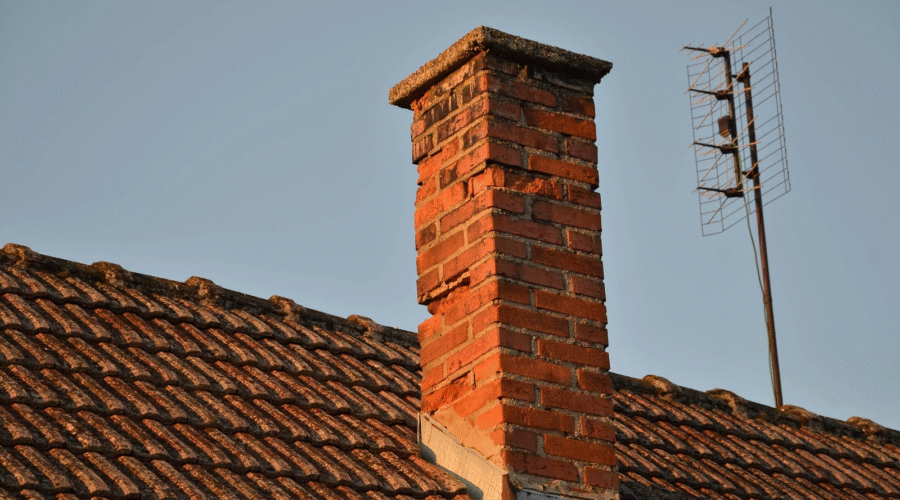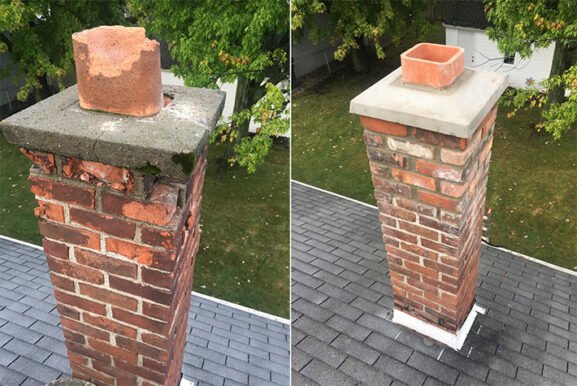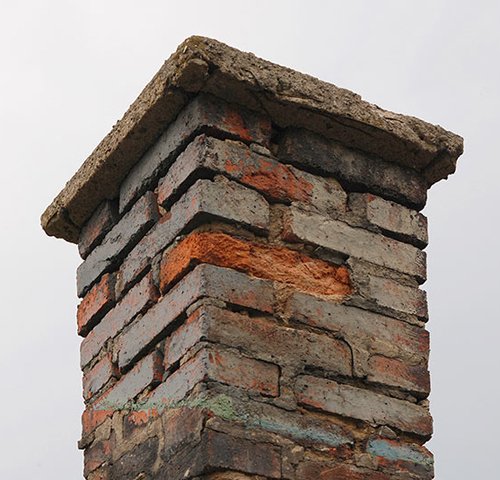Why You Shouldn’t Delay When It Comes to Repairing a Brick Chimney
Key Takeaways
- Neglecting brick chimney repair can lead to serious structural and safety risks.
- Common signs of damage include spalling bricks, deteriorating mortar, and chimney leaks.
- Timely repairs can prevent costlier replacements and protect your home’s interior and exterior.
- Working with experienced masonry professionals ensures long-term durability and proper restoration.
Understanding the Purpose of a Brick Chimney
Brick chimneys do more than just vent smoke from your fireplace. They are structural features that contribute to the safety and functionality of your home. Chimneys must withstand high heat, weather changes, and decades of use. Over time, even the most well-built brick chimneys can start to break down.
When this deterioration begins, the integrity of your chimney is compromised. Bricks can become loose or cracked, and mortar can erode due to weather exposure. If ignored, these seemingly minor issues can escalate into serious safety risks, from fire hazards to water damage inside your home.
What Causes Brick Chimneys to Need Repair
Several factors contribute to brick chimney damage. Moisture is one of the most destructive. Rain, snow, and humidity can seep into the porous materials, freeze and thaw with the seasons, and cause bricks to crumble or crack. This process is known as spalling, and it’s a major reason why homeowners end up needing chimney repair.
In addition, poor construction techniques, substandard materials, and lack of maintenance can all accelerate chimney degradation. Older homes, especially in regions like the Northeast where winters are harsh, are particularly vulnerable to this kind of wear.
Another common cause is creosote buildup from frequent fireplace use. This thick, tar-like substance not only increases fire risk but can also hold moisture against the brick, speeding up decay.
Signs That Your Brick Chimney Needs Immediate Attention
Knowing what to look for can help you catch chimney problems early. Some warning signs are clearly visible, while others may be more subtle.
Here are the most common indicators that your brick chimney needs repair:
- Cracked or missing bricks often signal underlying structural issues.
- Crumbling mortar between bricks means the chimney is losing its strength.
- White staining or efflorescence on the exterior is a sign of trapped moisture.
- Rust in the firebox or damper usually indicates water infiltration.
- Leaking near the chimney or ceiling during rain is another red flag.
If any of these issues appear, it’s critical to consult a chimney specialist to assess the damage before it worsens.
Effective Repair Methods for Brick Chimneys
There are several techniques used to restore a brick chimney, depending on the extent of the damage. The most common method is tuckpointing, which involves removing old, decaying mortar and replacing it with fresh mortar that matches the original in both color and strength. This restores both the appearance and stability of the chimney.
In more severe cases, rebuilding portions of the chimney may be necessary. If bricks are heavily spalled or missing, a partial or full rebuild might be the safest option. Chimney crowns and flashing, which are vital for preventing moisture intrusion, may also require repair or replacement.
In some instances, chimney liners may need attention, particularly if the inner flue has been damaged by heat or corrosion. These liners play a critical role in directing smoke and gases safely out of your home.
According to the Chimney Safety Institute of America, an annual inspection is one of the most important steps in maintaining your chimney’s health and catching damage before it becomes a bigger issue.
Preventative Maintenance Can Extend Your Chimney’s Life
You don’t have to wait until visible damage appears before taking action. Preventative care plays a key role in keeping brick chimneys in good shape. One of the simplest things homeowners can do is schedule regular inspections and cleanings.
Weatherproofing treatments can also be applied to your chimney to help protect it from moisture. These breathable sealants allow water vapor to escape while blocking rain and snow from entering the bricks.
Additionally, installing or repairing a chimney cap can prevent debris, animals, and rain from entering your flue system. It’s a low-cost upgrade that can make a big difference in minimizing long-term damage.
Hiring the Right Experts for Chimney Repair Work
Chimney repair is not a do-it-yourself project. The safety risks are too high, and improper repairs can create more problems than they solve. That’s why hiring a qualified chimney mason or contractor with experience in brickwork is so important.
Look for professionals who are certified by recognized bodies like the CSIA or the National Fireplace Institute (NFI). They should be able to provide a full assessment of your chimney, document the damage, and explain their proposed repair plan clearly.
A reputable contractor will also use matching materials and proper techniques to ensure the finished result is both functional and visually consistent with your home.
The Cost of Delaying Repairs
Ignoring chimney problems doesn’t just threaten your home’s structure. It can also lead to costly repairs down the line. For example, a small crack in the mortar may seem harmless at first but can allow water to enter the walls, causing interior mold, wood rot, or even ceiling damage.
Left unresolved, extensive water damage can result in full chimney collapse or expensive repairs to your roof and attic. In addition, unresolved leaks near the flue can corrode metal parts, increasing fire hazards.
Taking care of brick chimney repairs when the problems are still small is always more cost-effective than waiting for a major restoration project.
Why Consistent Upkeep Saves More Than Just Money
Proactive maintenance and timely repairs do more than protect your wallet. They also improve the safety, efficiency, and longevity of your chimney system. A well-maintained brick chimney ensures proper airflow, minimizes the risk of carbon monoxide buildup, and keeps your fireplace functioning as intended.
It also preserves the aesthetic and historical character of older homes, which is often lost when a neglected chimney must be rebuilt or removed. By investing in care today, homeowners can avoid disruption, reduce fire risks, and maintain property value.
Prioritizing Long-Term Safety and Performance
Caring for a brick chimney is an essential part of responsible homeownership. Whether you’re addressing minor cracks or more serious structural issues, acting early makes a major difference. Repairing a brick chimney may not always be urgent, but it should never be ignored.
With the right knowledge, inspection schedule, and professionals by your side, you can ensure that your chimney remains safe, strong, and beautiful for years to come.


